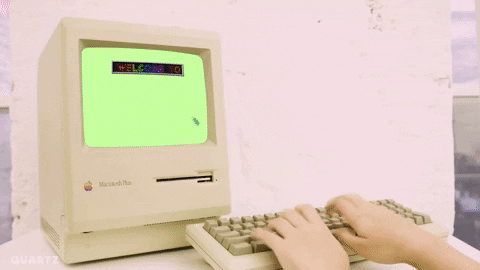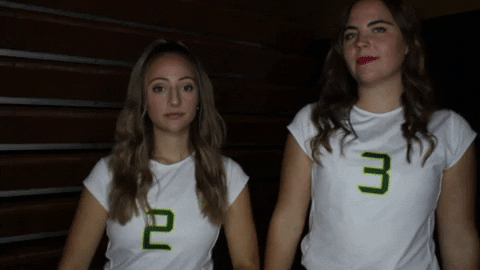- NIL Wire
- Posts
- 🏅 Interview with NIL Educator Samantha Green
🏅 Interview with NIL Educator Samantha Green

Hey there,
Today’s expert interview features the one and only Samantha Green, a seasoned professional in the NIL space. With over 7 years of experience in creative video editing and social media management, Sam has become a go-to resource for student-athletes navigating the complex world of NIL opportunities.
As the founder of NIL with Sam Green, she specializes in teaching student-athletes how to create content efficiently, build their brand, and monetize their efforts without compromising their athletic commitments. In this interview, we'll dive into Sam's insights on common social media mistakes, the importance of personal websites for athletes, and strategies for success in the NIL space.
Whether you're a top-tier athlete or competing in a non-revenue sport, Sam's advice aims to help all student-athletes make the most of their NIL opportunities!
Let’s get into it!
— Cole, Justin and Collin

With your extensive experience in social media management, what are the most common mistakes you see NIL athletes making when trying to build their personal brand on platforms like Instagram or TikTok?
The number one mistake I see athletes make when starting to build their brand on social media is the lack of goal setting. If you don’t have a clear vision of what you’re creating each day, the bigger picture you’re working towards, or what you want to achieve, you’ll end up feeling lost and burnt out in the process. Want to go viral? Great—set that as a goal and create content that aligns with the algorithm. Want to launch a nonprofit? Awesome—produce content that supports that initiative. Without a clear direction, you’ll eventually feel stuck, lost, and burnt out. Set your goals, and let them guide your content creation journey.

You've recently partnered with a tech team to help athletes build websites. How do you envision these personal websites complementing an athlete's social media presence, and what unique monetization opportunities do they offer?
As I traveled from school to school, I noticed a common trend: athletes were constantly directing their audiences to other people’s websites, losing potential revenue and engagement in the process. To change that narrative, I partnered with HLX to empower athletes to keep all the money, audience, and attention within their own personal brand.
I chose HLX because of its advanced tech capabilities. Originally a gaming platform, their technology surpasses most other options, offering athletes endless opportunities to monetize. From selling merchandise and products to creating storefronts for services like one-on-one coaching and downloadable nutrition guides, athletes have a wide range of income streams. They can even organize gaming tournaments, connect with their entire fan base via SMS notifications, and, in a groundbreaking feature, sell advertising space on their own websites—something I’ve never seen before in the NIL space.

Teaming up with
NIL Wire All-Access will turn you into a professional on NIL topics. We do more than just scratch the surface; we dive deep into topics. For example, in tomorrow’s edition, we will examine two different legal models for the future of college sports: the “labor union” model and the “player equity model.”
UPGRADE now so you don’t miss out!
NIL Wire All-Access will also offer exclusive Mailbag editions, where we’ll answer reader-submitted questions. This ain’t ESPN - this is for hardcore college sports fans, administrators, and more!
In your role as Chief Marketing Officer at HLX, how do you approach the challenge of creating a "frictionless experience" for student-athletes to connect with fans in real-time, especially considering their busy schedules?
I joined HLX as CMO for this exact reason: it’s frictionless. Previously, I spent countless hours helping athletes create websites on platforms like Squarespace and Wix. Now, with the simplicity of HLX’s tech platform, athletes can build a complete monetization hub within minutes.
One standout feature is our SMS notification capability, which enables athletes to communicate directly with their audience through a single text. This not only saves time but also allows for more personal engagement. Additionally, at HLX, we’ve launched athlete-versus-fan tournaments, where athletes can actually compete against their fans in a fun, engaging, and interactive way.

You emphasize the importance of the 4-5-year window athletes have to create a lasting brand. What strategies do you recommend for athletes in non-revenue sports or those with smaller followings to maximize this opportunity?
Some of my athletes in non-revenue-generating sports are actually earning the most because they have a clear strategy to make the most of their 4-5-year window. One great example is Riley Simmons, a track athlete at Memphis. When Riley approached me, she shared her goal of becoming a motivational speaker after graduation. She was concerned that, as an athlete in a non-revenue-generating sport, she might not have the platform to achieve this.
We developed a social media content strategy to position her as a leader and motivational speaker. Now, thanks to her content and strong positioning, local high schools pay Riley to speak to their athletes. It doesn’t matter what sport you play or how much revenue your sport generates; with hard work and a clear vision, any athlete can build their brand through NIL.

As an educator in the NIL space, how do you help athletes balance their content creation and brand-building efforts with their academic and athletic responsibilities? Can you share any success stories of athletes who've effectively managed this balance?
Video editing and social media platforms have come a long way. There are now apps like CapCut that make video creation simple, even offering video templates that allow you to create content with just a few clicks. Social media platforms like Instagram also have scheduling tools, and I encourage athletes to make the most of them. By creating a batch of content on their off days and scheduling it in advance, athletes can set up a month’s worth of content with just one day of filming and editing.
I advise all my athletes to be realistic with themselves. If you have a 4-5-year window to build your brand, consistent, steady progress over those years will get you much further than creating a ton of content in one month, burning out, and then stopping. When I danced in the NBA, I felt pressured to constantly produce content, which led to burnout. I ended up deleting my Instagram account, and losing that fan base. If I’d simply chipped away at it over time, I would have been much further along.
Athletes can reach out to me for more tips and tricks to make this process easier and more sustainable.
Click here to get in touch with Sam.

